By Dan Weisz
Last Sunday morning I drove around Santa Cruz Flats with two friends, Steve and Rene. During this time of year, that expanse of agricultural fields (west of the Santa Cruz River running from Marana to Casa Grande) can be a great place to see migrating Swainson’s Hawks. During the summers, these birds live in the open country of the Great Plains and the West. At this time of the year, they are migrating to their winter homes in the plains of Argentina!! There is a chance to see large flocks of these birds congregating on their journey south. Although we didn’t see any large groups that morning, we did see a number of Swainson’s Hawks.
The adult below has the classic “bib” of a Swainson’s Hawk. Although Swainson’s Hawks colors can be variable, that bib is distinctive and common for this species.
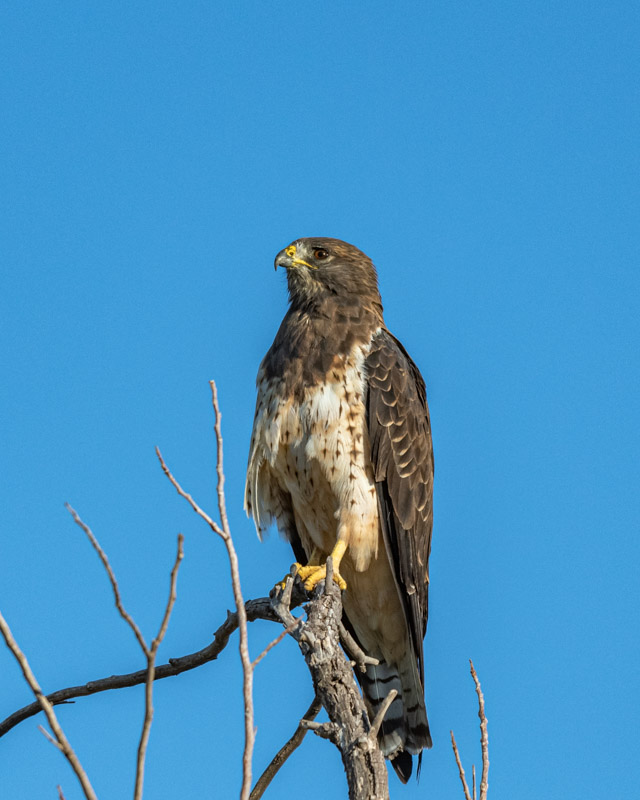
Much of our time was spent looking at and photographing a very cooperative juvenile Swainson’s Hawk. Often these first-year birds do not know enough to be frightened off quickly, or perhaps they are just more curious about their ‘new’ world, and they will sit much longer in our presence than an adult might. We remained inside the car in order to use the car as a “blind”. The bird will be less worried about a car than it might be about some humans walking around nearby.
As a juvenile, this bird has a lighter eye than the adult Swainson’s in the shot above. For some truth in advertising, there were quite a few branches and twigs from the pecan tree above this bird’s head. I cleaned them out of the photo during processing as I thought the blue sky would help to showcase the bird better than a bunch of branches.
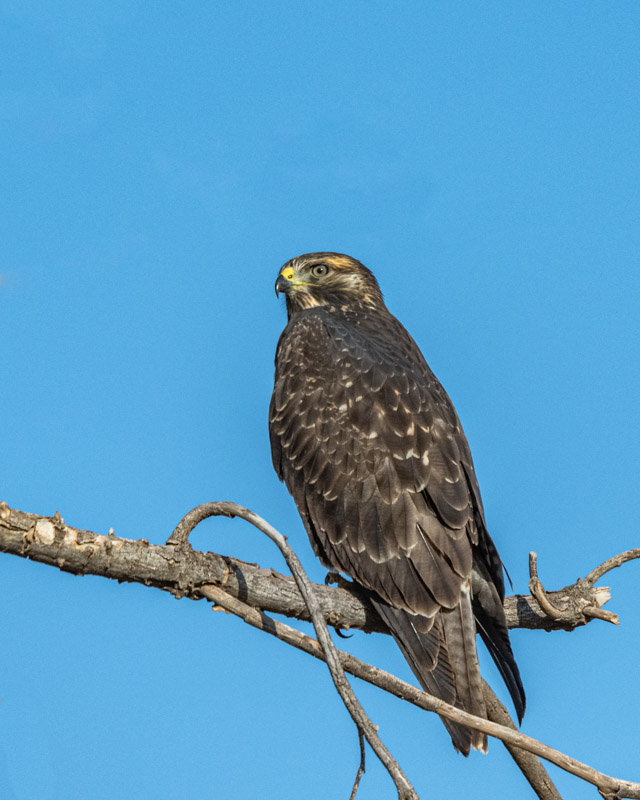
The Swainson’s Hawk was curious and looked around quite a bit while we watched it. Raptors have many more bones in their necks than humans and mammals do. This feature allows them to turn their heads around 180°.
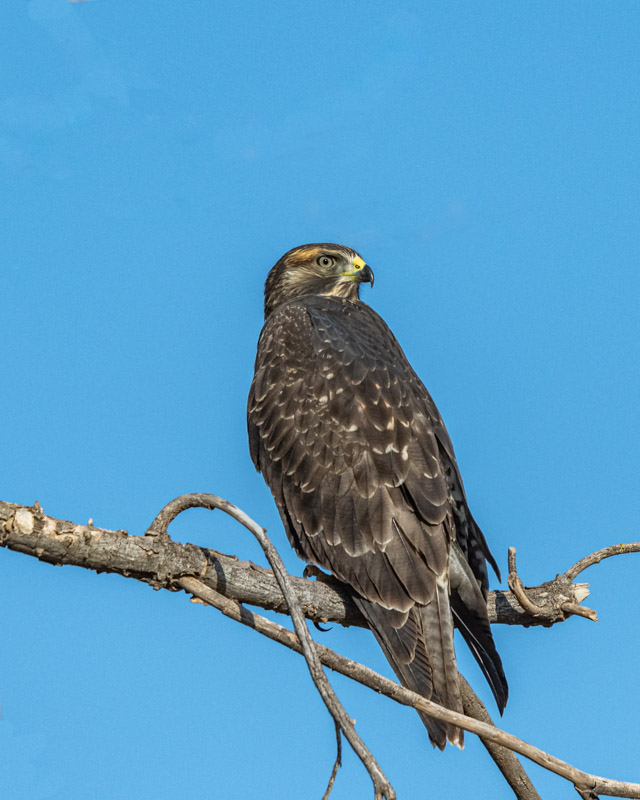
The eyes of raptors are very large in their heads and are more elongated. Because of the shape and size of their eyes, raptors cannot move their eyes in their sockets as we humans can, so they turn their heads or move side to side to get a better or different view of things. It does look very comical, but this bird is really just trying to see its world from a different perspective.
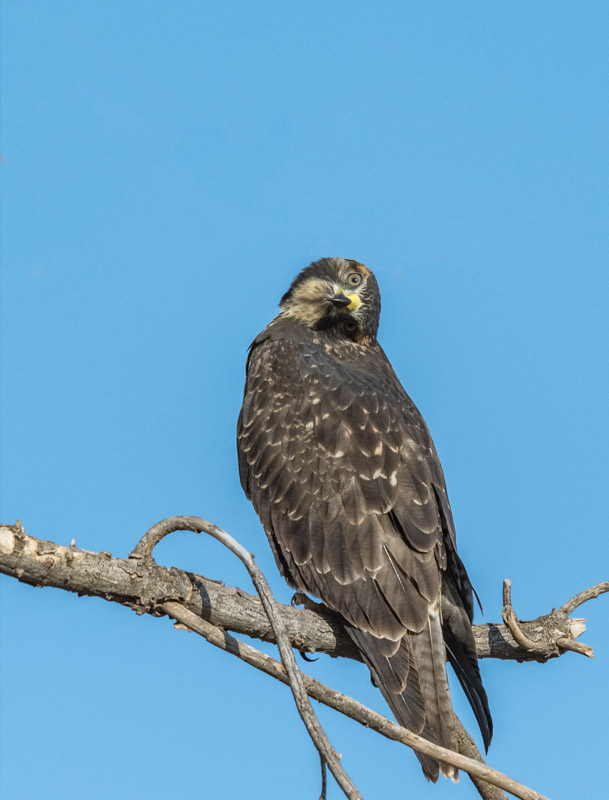
The juveniles will make their first journey south with a parent. This Swainson’s Hawk began calling for its parent after a while, whether for food or company we don’t know.
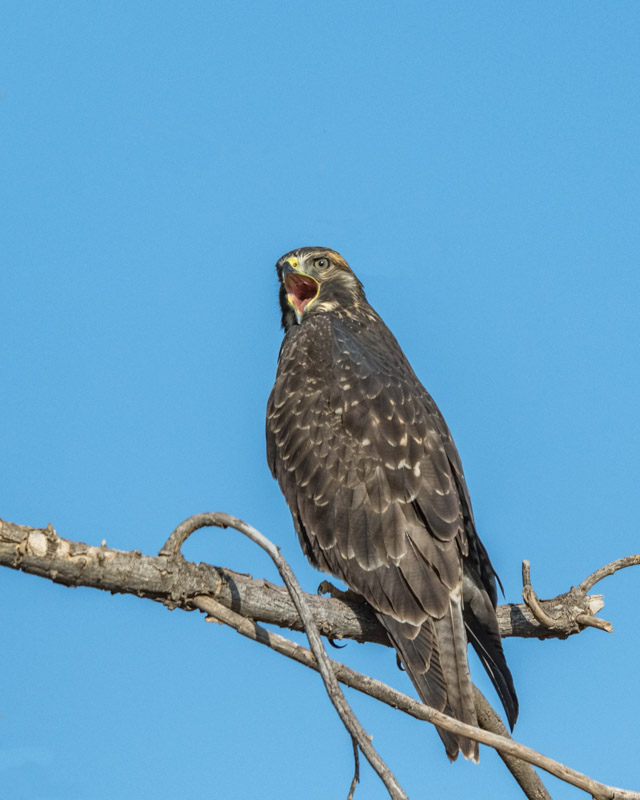
And then the bird turned to face us. It was still calling for its parent and now the camera caught it with its nictitating membrane closed over its eye. For those of you who don’t know about this, the nictitating membrane is a third eyelid that birds use to protect their eye. It is translucent and does look ghoulish to us. As a juvenile Swainson’s Hawk, its breast is more streaky than the adult’s in the first photo in this email. The bird’s bib is also not quite developed yet.
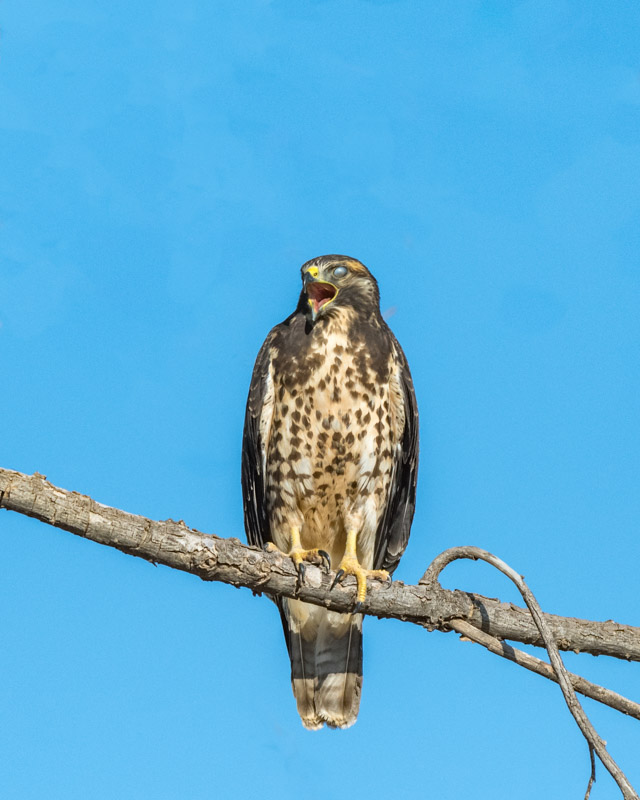
The next time you have a commute somewhere and are fussing about the distance or traffic, think about this bird’s commute. The range map below indicates how far it will be traveling. Orange notes the summer range, yellow shows its migration route, and blue is the Swainson’s Hawk’s winter range. We’ve got it quite a bit easier than these birds do.
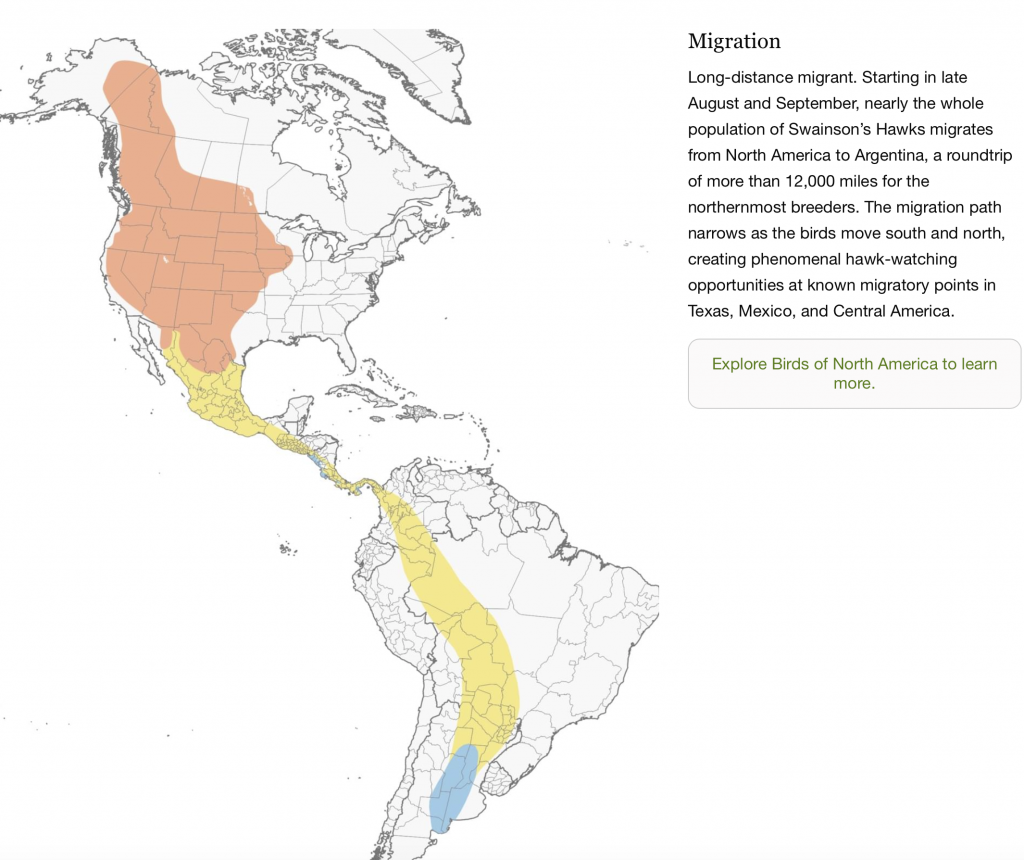
I will have some more photos of this bird in a future email along with photos of other birds we saw on the Flats.
